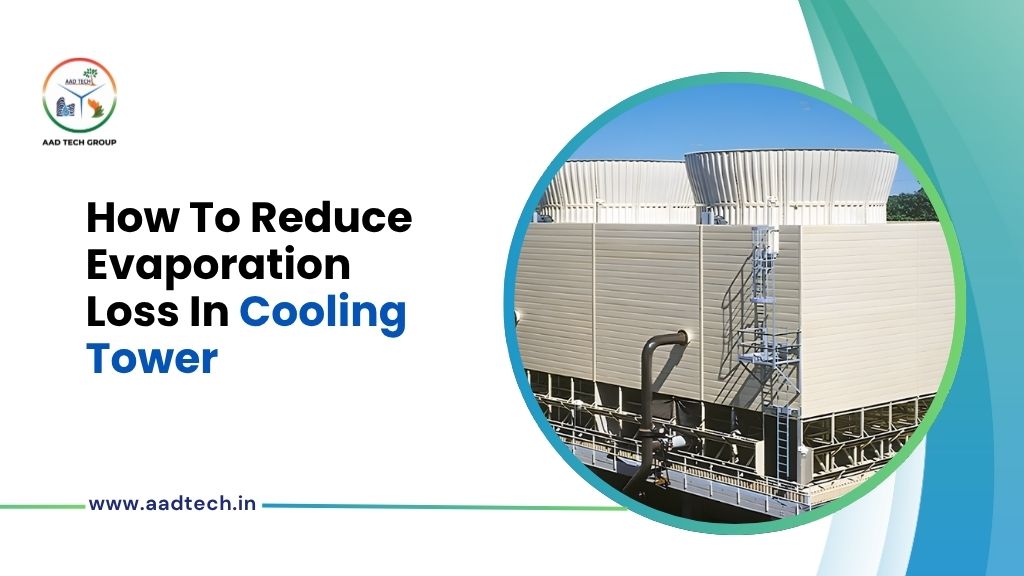At Aad Tech, we’ve learned that one of the most overlooked aspects of industrial cooling performance is timely cleaning and maintenance. Cooling towers work continuously to reject heat, but in doing so, they collect dust, organic matter, and mineral deposits. Over time, this buildup can dramatically reduce efficiency and even shorten equipment life.
Regular cleaning is more than just a maintenance task—it’s a performance strategy. Whether your system is brand-new or part of a cooling tower retrofit, knowing when and how often to clean can make the difference between efficient operation and costly downtime.
Why Cooling Tower Cleaning Matters
A cooling tower’s job is simple in theory: remove heat from process water and return it at a lower temperature. But real-world operation introduces complications. Minerals in the water precipitate out, airborne dust and organic material settle into the basin, and algae grow where sunlight and moisture meet.
Left unchecked, these contaminants lead to:
- Reduced heat transfer efficiency, as scale forms on fill media.
- Higher energy consumption, since fans and pumps work harder.
- Microbial growth, including harmful bacteria such as Legionella.
- Corrosion and fouling, which degrade metal components.
Each of these issues shortens tower life and undermines the efficiency gains you may have achieved through an upgrade or retrofit project.
Recommended Cooling Tower Cleaning Frequency
The optimal cleaning schedule depends on several factors—water quality, operating hours, local environment, and tower design—but general industry best practices offer a reliable baseline:
| Type of Maintenance | Recommended Frequency | Purpose |
| Visual inspection | Weekly | Identify scaling, algae, or drift buildup early. |
| Basin cleaning | Quarterly | Remove sediment and biological debris. |
| Fill and drift eliminator cleaning | Every 6–12 months | Maintain proper water distribution and airflow. |
| Full tower shutdown cleaning | Annually | Deep-clean internal surfaces and verify mechanical integrity. |
These intervals can be adjusted based on operating conditions. For example, in dusty regions or plants using high-mineral groundwater, more frequent cleaning may be necessary.
The Cost of Delayed Cleaning
Postponing cleaning can quickly offset any efficiency gains achieved through system design or cooling tower retrofit projects. When deposits accumulate:
- Heat transfer surfaces lose effectiveness, raising outlet water temperatures.
- Energy use increases, as fans and pumps must run longer.
- Process stability declines, especially in sensitive operations such as chemical or pharmaceutical manufacturing.
A 1 mm layer of scale can reduce heat transfer efficiency by up to 10 % (U.S. Department of Energy, 2023). Over the course of a year, that can translate into substantial energy losses and higher water treatment costs.
Timing Your Cleaning with Seasonal Operation
In most Indian climates, pre-monsoon and post-monsoon are the ideal cleaning periods. Here’s why:
- Pre-monsoon cleaning (March–May): Removes dry-season dust and prepares the system for humid months, when microbial growth accelerates.
- Post-monsoon cleaning (September–October): Flushes out accumulated silt, algae, and organic residue caused by rain and high humidity.
For facilities running continuously, scheduled cleaning during production changeovers or low-demand weeks helps minimise downtime without compromising performance.
How Cleaning Supports Cooling Tower Retrofits
When we undertake a cooling tower retrofit, cleaning is an essential first step. Before new fill media, nozzles, or drift eliminators are installed, the entire system must be descaled and disinfected. A clean baseline allows upgraded components to perform at their rated efficiency.
Regular cleaning after a retrofit also protects your investment—maintaining the improved airflow and heat rejection capacity that modern materials and designs deliver.
At Aad Tech, we integrate cleaning and inspection into our retrofit process to ensure long-term reliability, not just short-term performance.
Signs Your Cooling Tower Needs Immediate Cleaning
Watch for these operational indicators:
- Uneven water distribution or dry fill sections
- Unusual odours near the tower basin
- Visible slime, scale, or rust deposits
- Rising approach temperatures or outlet water warmer than expected
- Excessive drift or mist escaping from the tower
Addressing these signs early prevents unplanned outages and extends the lifespan of your cooling infrastructure.
Aad Tech’s Approach to Efficient Cooling Tower Maintenance
Our maintenance framework combines engineering insights from Melfrank, our subsidiary company, with practical field experience. We focus on:
- System audits before and after cleaning to quantify performance gains.
- Safe chemical and mechanical cleaning methods, compliant with CPCB and OSHA guidelines.
- Integration with retrofitting projects, ensuring mechanical and thermal components remain aligned.
- Documentation and reporting for validation and compliance audits.
This approach ensures every cleaning cycle not only restores but also enhances system performance.
Conclusion
Effective cooling tower maintenance isn’t about frequency alone—it’s about timing, consistency, and integration with your overall cooling strategy. Regular cleaning maintains efficiency, reduces operating costs, and safeguards process reliability.
At Aad Tech, we view cleaning as part of a broader performance plan that includes monitoring, treatment, and retrofit optimisation. By combining these elements, manufacturers can extend the life of their cooling systems while achieving measurable gains in energy and water efficiency.

